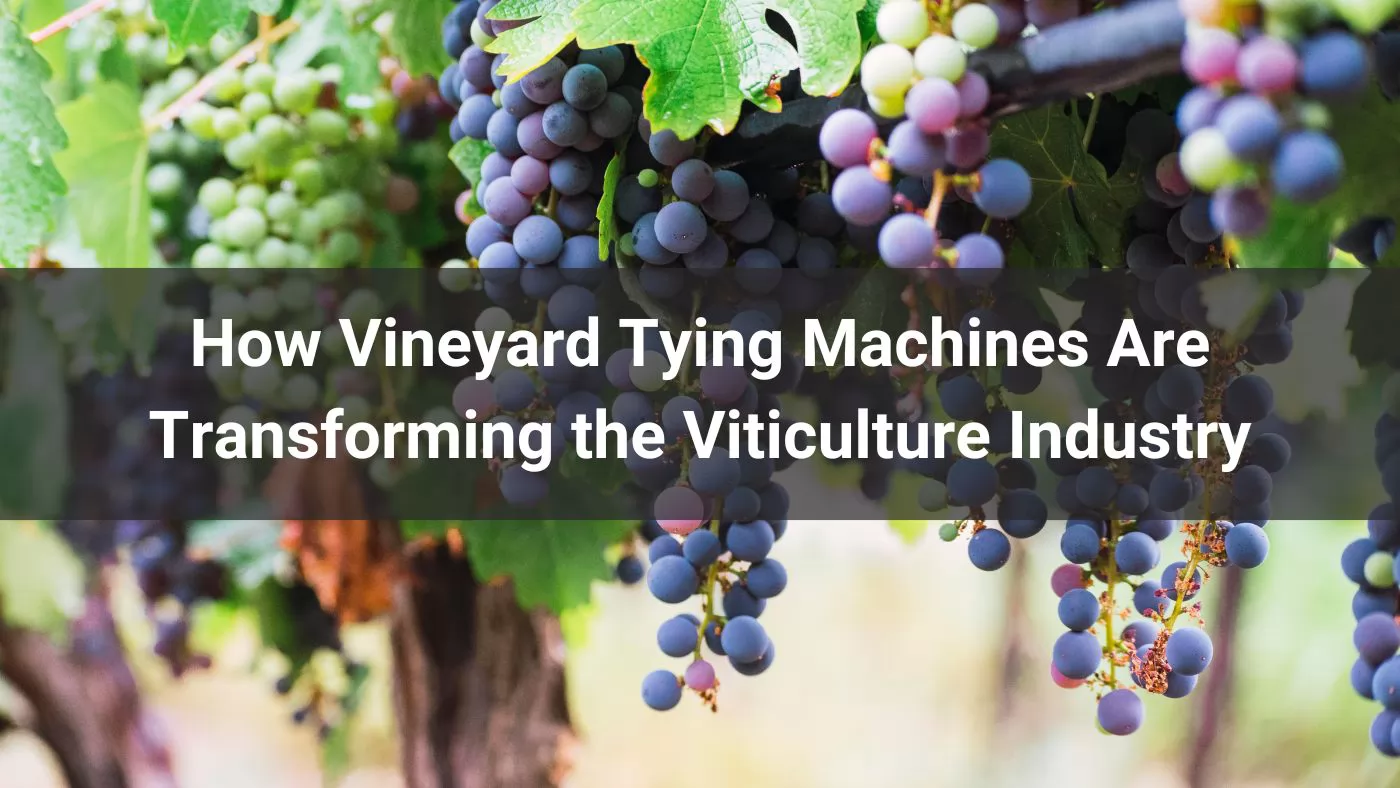
Over the past few decades, the viticulture industry has experienced a remarkable wave of technological innovation, with vineyard tying machines playing a pivotal role in this transformation. As a revolutionary solution for securing vines, these machines have not only significantly enhanced the efficiency and productivity of vineyards worldwide but have also ushered in a new era of innovation in grape cultivation and vineyard management. Looking back, from the initial manual tying methods to the development of highly sophisticated and efficient mechanical systems like the Infaco tying machine, the evolution of vineyard tying machines is nothing short of impressive. They represent rapid advancements in agricultural engineering and automation while reshaping traditional perceptions and practices of vine support. Today, vineyard tying machines stand out for their exceptional speed, precision, and adaptability, making them the preferred choice for growers seeking to optimize their operations and improve grape quality.
This series of transformations and advancements highlights the viticulture industry’s relentless pursuit of excellence in providing high-quality grape production and its remarkable achievements.
The history of vine support is a long and fascinating journey, tracing its origins back thousands of years to early viticultural civilizations. Throughout this vast historical timeline, ancient cultures demonstrated remarkable ingenuity and resourcefulness in tying practices, laying the groundwork for modern vineyard management despite the rudimentary techniques of their time.
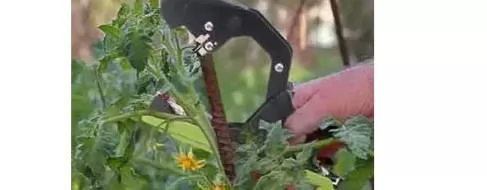
The ancient Romans, pioneers of viticulture, showcased extraordinary creativity in supporting their vines. Archaeological evidence reveals that they skillfully used wooden stakes and natural fibers to secure grapevines, carefully selecting materials to ensure stability and promote healthy growth. By ensuring vines were properly supported, they aimed to maximize sun exposure and improve fruit yield, reflecting their deep understanding of viticultural needs and their appreciation for agricultural efficiency.
Similarly, the ancient Greeks made significant contributions to vine support. They employed woven reeds and branches to create trellises, an innovative method that demonstrated their advanced knowledge of plant structure and growth patterns. These techniques, though simple by today’s standards, prolonged the productivity of vineyards and enhanced the quality of life for growers, providing valuable insights that laid the foundation for modern vineyard tying systems.
The significance of early tying experiments lies in laying the groundwork for material research, advancing technology, fostering interdisciplinary collaboration, providing a model for modern tying machine development, and raising awareness of vine health. These contributions have profoundly impacted the field of viticulture and the broader scope of agricultural science.
The mid-20th century marked a pivotal turning point in the history of vineyard tying machines. Agricultural engineers in Europe, particularly in France and Italy, pioneered the use of motorized tying devices during the post-war period to address labor shortages. This innovation resolved the critical issue of manual labor dependency, establishing a robust foundation for the mechanization of vine support.
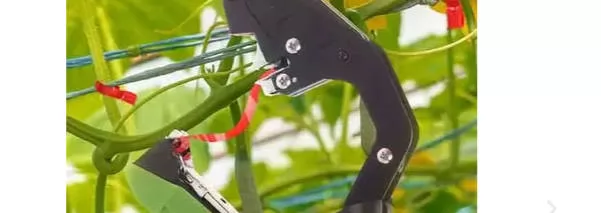
These early machines catalyzed rapid advancements in vineyard tying technology and spurred extensive research into durable materials and automation. Over time, steel and reinforced plastics became the materials of choice for tying machines, significantly improving their reliability and performance in vineyards worldwide.
The introduction of digital technology and advanced automation in the 21st century revolutionized the vineyard tying machine field. Among these innovations, GPS-guided tying systems stand out as a transformative advancement. They allow growers to precisely map and adjust tying patterns based on vine growth, improving efficiency and reducing waste.
Additionally, the advent of adjustable tension technology has greatly enhanced operational flexibility. With this approach, machines can adapt tying tension to different vine varieties and trellis systems, minimizing damage and optimizing support. This not only shortens setup time but also improves vine health and grape quality.
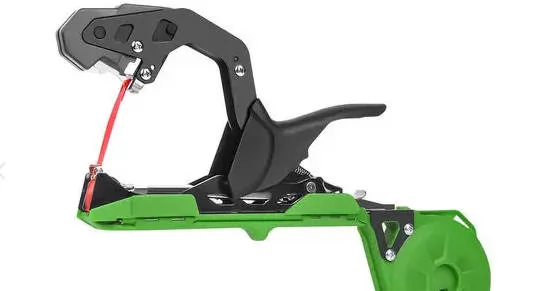
Simultaneously, the widespread adoption of lightweight, battery-powered designs has revolutionized machine portability. Growers can now use CAD software to design customizable tying heads, and advanced manufacturing ensures precise and efficient production, improving adaptability and ease of use in diverse vineyard conditions. Examples include electric tying machines like the Infaco AT1000, which offer high-capacity spools and removable batteries for extended use in tying vines.
Vineyard tying machines vary based on their design, vineyard needs, and operational techniques. Each type has distinct advantages and limitations. Below is a detailed overview of the main types, including specialized variants such as rod tying machines, binding wire tying tools, wire tying machines, and tying machines for agriculture:

When determining the most suitable tying machine, growers consider factors such as vineyard size, vine variety, trellis design, and budget. Collaborating with agricultural experts can ensure the right machine is selected for optimal vine health and productivity, whether opting for a twine tying machine, rope tying machine, or other variants like tape tying tools, ribbon tying machines, or even auto balers for broader agricultural needs.
Vineyard tying machines have emerged as a preferred choice for vine support due to their efficiency, adaptability, and labor-saving benefits. However, they are not suitable for all vineyards, and professional assessment is essential before adoption. Below are some of their most notable advantages, encompassing options like binding wire tying machines, box tying machines, tape tying machines, knot machines, electric tying machines, and newspaper tying machines adapted for agricultural use:
Considerations: Not all vineyards benefit from tying machines, especially small or traditional setups. Growers should assess vineyard layout, vine age, and economic feasibility before investing.
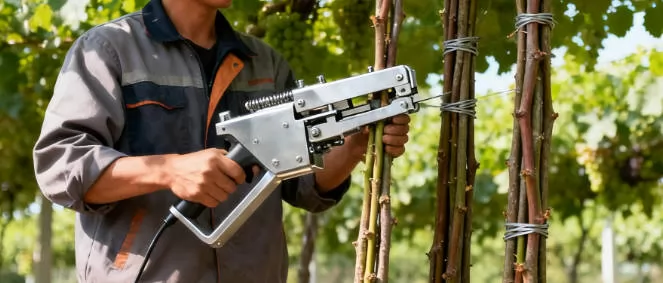
Technological advancements in vineyard tying machines have greatly enhanced options for growers managing vine support. These innovations are improving precision, expanding operational scope, and reducing labor demands. Here’s an overview of some key developments, including automatic bow tying machines, automatic tying machine prices, and specialized tools like the Infaco tying machine:
Key Takeaway: Innovations like GPS, robotics, and sensors are reshaping vine support. Selecting the right technology depends on vineyard size, budget, and goals, requiring consultation with experts.
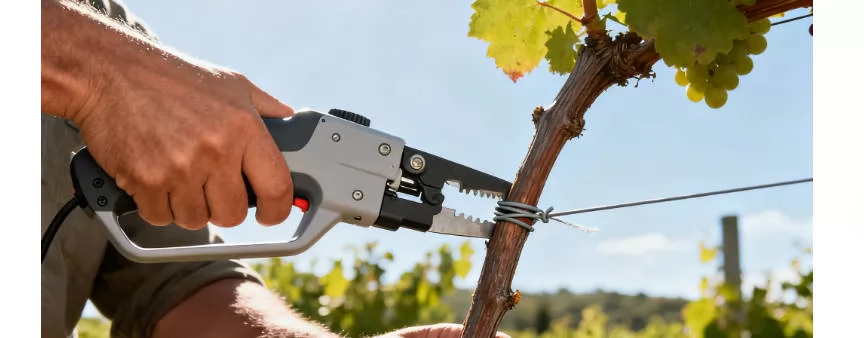
The viticulture industry is undergoing profound changes and developments. The integration of automation, sustainable practices, and precision agriculture are the major trends currently shaping the sector. These trends not only improve efficiency and grape quality but also reduce environmental impact, driving the continuous growth of the industry.
Vineyard tying machines are essential for modern viticulture due to their ability to enhance productivity, support vine health, and promote sustainability:
The application of vineyard tying machines has achieved remarkable results in modern viticulture, providing numerous benefits to growers. Successful implementation not only enhances vineyard efficiency but also significantly improves grape quality and sustainability.
From a functional perspective, tying machines integrate seamlessly with vineyard layouts, forming a stable foundation to support vine growth. This ensures durability and reliability, allowing vines to thrive and produce high-quality grapes, which improves overall vineyard health.
From an operational standpoint, these machines are designed with adaptability to various trellis systems and vine types. Through personalized settings, growers can optimize tying patterns to match specific vineyard needs, achieving a more efficient and harmonious cultivation process, thereby boosting productivity and market competitiveness.
Moreover, vineyard tying machines represent the future of viticulture. With continuous technological innovation and widespread adoption, these machines are advancing in design, automation, and eco-friendliness. These advancements not only improve tying precision and labor efficiency but also reduce operational costs and environmental footprints, providing growers with more choices and better cultivation outcomes.




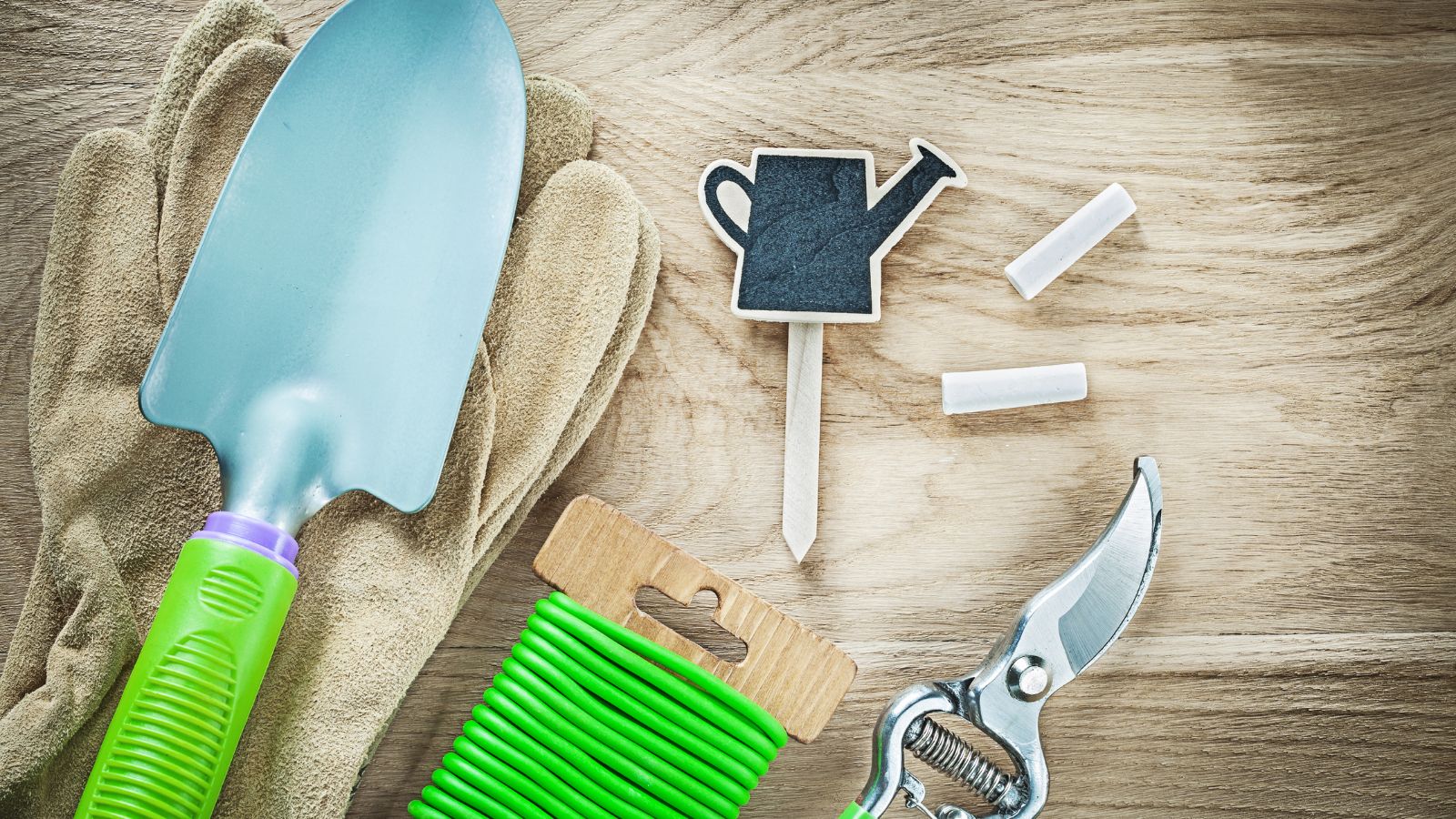

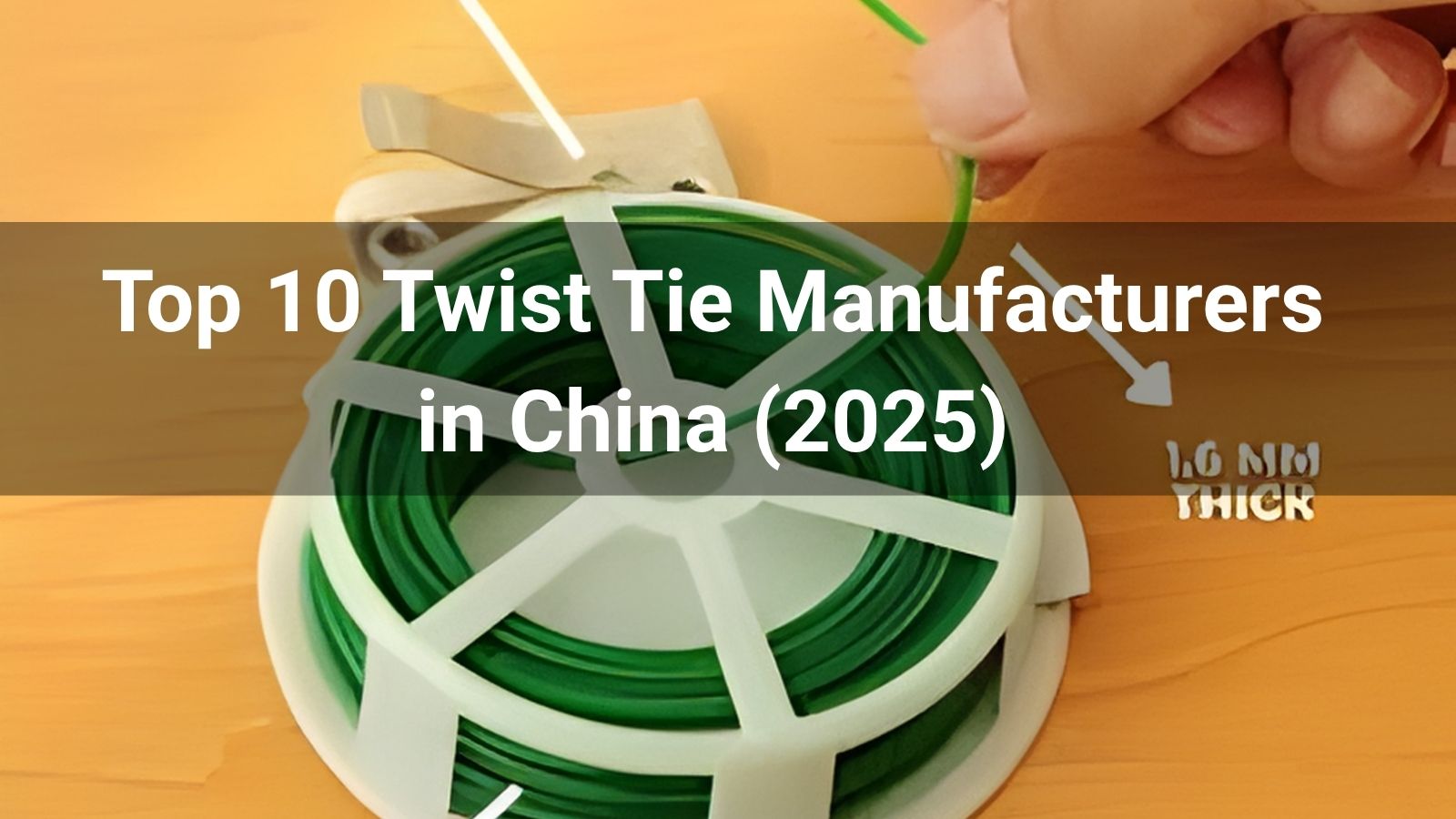

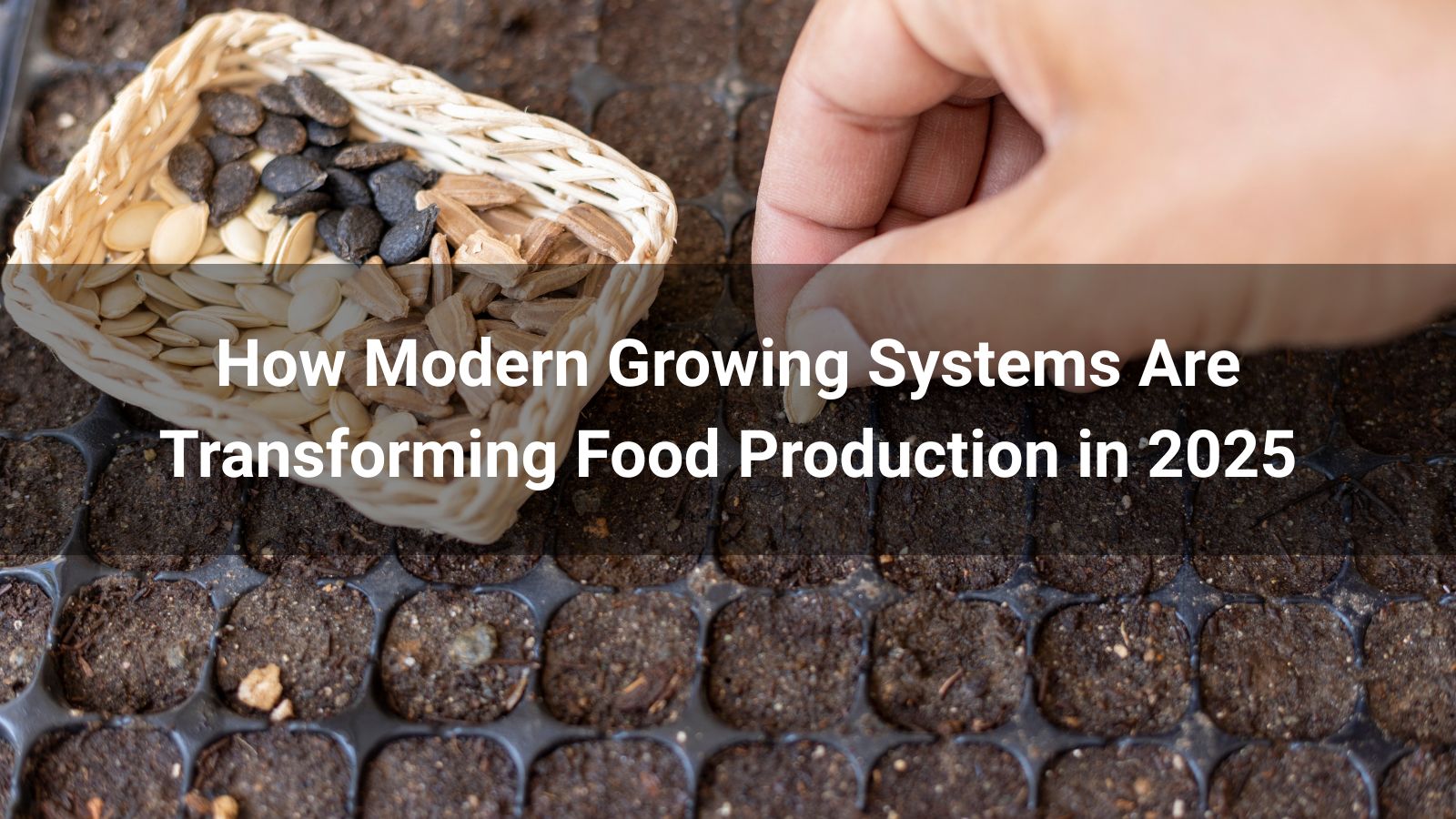

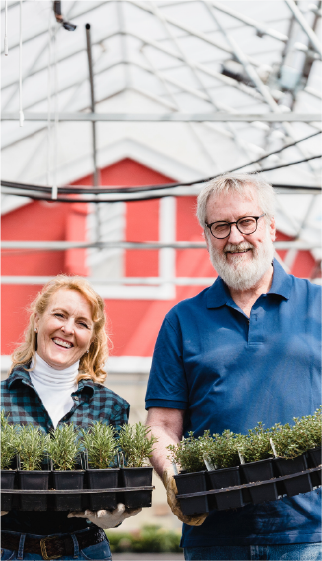
We use cookies to make the website work, to provide advanced features, social media and traffic analysis, and we use analytics and third-party advertising cookies. If you choose to click "Deny All", you will retain the default setting of not allowing the use of cookies or other tracking tools other than technical tools.



